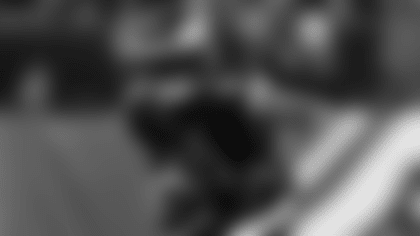Wendell Smallwood. Darren Sproles. Donnel Pumphrey. Ryan Mathews. These are the four leading candidates to carry the football for the Philadelphia Eagles in 2017. The coaching staff installs the early version of the playbook with some uncertainty as Phase Two of the offseason continues.
The Eagles satisfied some very important need positions in last weekend's draft, including defensive end and cornerback, and they may or may not have done the same with the fourth-round selection of Pumphrey, the record-setting running back from San Diego State whose incredible production, 6,405 rushing yards, belies his 5-9, 180-pound (dripping wet) frame.
"He can do a lot of things in the offense," Howie Roseman said. "I'm excited to see how the coaching staff uses him."
A close study of the 2016 Eagles running game reveals some numbers that suggest the offense moved the ball well on the ground, despite losing right tackle Lane Johnson for 10 games. Using analytics measuring overall play success in the running game – defined as any time the offense gains 40 percent of the yardage necessary for a first down on first down, 50 percent of the yardage necessary on second down, or a successful conversion on third or fourth down.
The Eagles ranked fourth in the NFL in first-down run success at 51.3 percent. They were seventh (57.7 percent) in second-down success percentage. On third and fourth down, a statistic that was combined, the Eagles weren't nearly as good, however. They were 27th in the league with a 43.5 percent success rate, suggesting that the short-yardage offense wasn't nearly as good as it needed to be.
The Eagles averaged 4.14 yards per carry, 18th in the NFL, and they had only seven rushing plays of 20-plus yards, 21st in the league. Also, the Eagles ranked 20th in the league with a 7.3-yard average distance needed on third down.
What does it all mean?
In the big picture, as the Eagles look to improve in 2017, they need to convert more third-and-short situations and they need to be more explosive in the running game.
"We missed some opportunities running the football and that's an area that we need to improve," head coach Doug Pederson said earlier in the offseason. "The red zone and some of our short-yardage situations, we've got to be better there. A play here or there really makes a difference."
No question about that, and it brings to light now what the Eagles have in the backfield. Mathews is a top talent, but he's had an injury-plagued career and is coming off a neck injury that curtailed his 2016 campaign. Mathews averaged 5.1 yards per carry in 2015, his first with the Eagles, but injuries limited him to just 106 carries. Last season, in 15 games and 155 carries, Mathews scored eight rushing touchdowns and averaged 4.3 yards per carry.
How much can the Eagles plan on Mathews? That remains to be seen.
In the meantime, they'll bring Smallwood along after a promising rookie season in which he gained 312 yards on 77 carries before a knee injury, that followed a Training Camp quad injury, knocked him to the sidelines after 13 games played. Now healthy, can Smallwood, at 208 pounds, carry a heavier burden?
Sproles is Sproles, a remarkable specimen of a football player, but he's never been and never will be a lead, full-time, go-to running back. Pumphrey is a player the Eagles are likely to move around the offense to create mismatches in space, and while he carried the ball an outrageous 1,059 times in four years at San Diego State, it's hard to imagine he will be that kind of workhorse at the NFL level.
Which leaves the Eagles … where, exactly? They have talent in the backfield, but they don't have a power back on whom they can rely upon. One of the more attractive veteran names on the market, Jamaal Charles, is now a Denver Bronco. There are still some players out there, and there will be more when the time draws closer to teams paring their rosters to the mandated 53 players, but how long can the team wait?
Maybe the Eagles just want to stay patient and see how it all develops. Maybe Pumphrey has the kind of versatility that the coaching staff can use to its benefit. Maybe Smallwood takes the big step forward in Year 2. Maybe Mathews finds a formula for staying healthy.
The Eagles know the roster isn’t complete. They know they're going to add and subtract and move some pieces around. They know there is a long, long time between now and September, when the games count in the standings.
Roseman and Pederson and Joe Douglas and all of the decision-makers are realistic about the running game and the personnel there. The Eagles must convert on third down and they must run with success in the red zone. They need to be more explosive, too.
Wither the run game? It has to improve, one way or any other, for the Eagles' offense to take its full step forward with quarterback Carson Wentz at the helm in his second season.























